Full-Day Seminars
- Each course earns 6 PDHs/AIA LUs. | Check with your state for their continuing education credits requirements.
|
Hilton Orlando
6001 Destination Pkwy
Orlanda, FL 32819
Orange County Convention Center
9800 International Dr.
Orlando, FL 32819
REGISTER TODAY
|
Registration fees:
- Early-Bird (through Oct 31)
$569 ($459 ASHRAE Member)
- Advance (Nov 1 - Jan 24)
$599 ($489 ASHRAE Member)
- Standard (Jan 25 – Feb 11)
$629 ($509 ASHRAE Member)
|
Saturday, February 8, 2025
Commercial Building Energy Audit (code 60)
8:00 a.m. – 3:00 p.m., Hilton Orlando
Course Description:
This course shows how to perform commercial building energy audits. Best practices and other information relevant to building owners, managers, and government entities are covered. The seminar includes a summary of materials essential for performing ASHRAE Level 1, 2, and 3 audits, time-saving tips for every auditor, how to hire an auditor, what to ask for in a comprehensive audit report, and how to build a successful energy efficiency retrofit team.
Learning Objectives:
- Understand the differences between ASHRAE Energy Audit Levels 1, 2, and 3
- Become familiar with the requirements of ACCA/ASHRAE Standard 211
- Learn the pros and cons of energy-efficiency measure calculation approaches
- Develop familiarity with some typical energy-efficiency measures
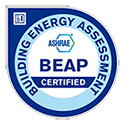 Interested in prepping for the Building Energy Assessment Professional (BEAP) certification exam? See a complete list of BEAP exam task content areas this course addresses.
Interested in prepping for the Building Energy Assessment Professional (BEAP) certification exam? See a complete list of BEAP exam task content areas this course addresses.
Instructor: Joe Hofstetter, P.E., Member ASHRAE, LEED® AP
Building Energy Modeling Fundamentals and Applications (code 61)
8:00 a.m. – 3:00 p.m., Hilton Orlando
Course Description:
This course provides knowledge and skills for the effective use of whole building energy modeling (BEM), with an emphasis on informing the development of new buildings and the improvement of existing buildings. This seminar helps attendees to identify appropriate analysis objectives, methods and procedures that help ensure useful, high-quality results. Attendees will receive guidance on communicating analysis results and playing an effective role in a project team. This seminar is “tool agnostic” and serves as a complement to other training on the use of specific simulation software. This seminar also presents concepts with a case study approach and uses exercises to reinforce understanding of new information.
Learning Objectives:
- Identify appropriate questions to evaluate and how to answer them with building energy modeling
- Select an analysis approach -- including the appropriate simulation tool, input sources, and alternatives -- based on the phase of design and questions to be evaluated
- Plan and implement a QA/QC process to provide confidence in results
- Effectively work with a design team and communicate analysis findings, focusing on timely, relevant information in a format appropriate for the audience
- Develop a building energy modeling project plan, including tasks, schedule, and level of effort
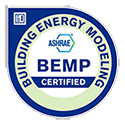 Interested in prepping for the Building Energy Modeling Professional (BEMP) certification exam? See a complete list of BEMP exam task content areas this course addresses.
Interested in prepping for the Building Energy Modeling Professional (BEMP) certification exam? See a complete list of BEMP exam task content areas this course addresses.
Instructors: Dru Crawley, Ph.D., AIA, BEMP, Fellow ASHRAE, and Sam Mason, P.E., BEMP, Member ASHRAE, LEED® AP
Operations & Maintenance of High-Performance Buildings (code 62)
8:00 a.m. – 3:00 p.m., Hilton Orlando
Course Description:
A high-performance building "consistently delivers a highly productive environment without wasting resources," according to ASHRAE Guideline 32, Sustainable High-Performance Operations and Maintenance. Operating and maintaining high-performance buildings often requires different actions than for a typical commercial or institutional building. The course includes an interactive group project to reinforce concepts such as how to identify and define energy and maintenance management metrics and how to make the business case for changes to an existing building and its systems.
Learning Objectives:
- Understand the role of operations and maintenance in high-performance buildings
- Gain a practical understanding of methods and sources of information to understand energy efficient and maintenance management practices in existing commercial and institutional buildings
- Understand how to use information to improve operations and maintenance practices in existing commercial and institutional buildings
- Gain awareness of how to select benchmarks and metrics for proactive decision-making
Instructors: Laurie Gilmer, P.E., Member ASHRAE, LEED® AP
Tuesday, February 11, 2025
Healthcare Facilities: Best Practice for HVAC Design and Operations (code 76)
9:00 a.m. – 4:00 p.m., Orange County Convention Center
Course Description:
Based on the ASHRAE book HVAC Design Manual for Hospitals and Clinics, this course introduces many unique and up-to-date healthcare design considerations and applications. The course covers Chapters 1-4, 6-11, and 13-16. Common medical terminology is introduced, and terminology differences between the medical and engineering fields are examined. Infection particles and their transport mechanisms are covered, followed by infection control methods. A major emphasis is placed on the necessary considerations for various diagnostic and treatment and support areas. The second half of the course focuses on air-distribution designs for surgical and patient rooms. Various control and energy efficiency techniques for cooling and heating plants are presented along with O&M and other commissioning topics. Smoke control and life safety best practices and application issues finish the course.
Learning Objectives:
- Explain the Relationship of Infection Control to HVAC Design
- Psychrometrics Applied to Health Care
- Explain the Implications of Life Safety, Fire Protection, and Emergency Preparedness on HVAC Design
- Describe the Fundamentals of Healthcare Heating and Cooling Systems
- Explain the HVAC Design for Isolation, Operating Intensive Care Unit, and Imaging Rooms
- Explain how Healthcare HVAC Systems can be designed with Energy Conservative Strategies
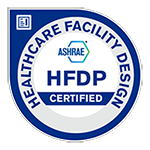 Interested in prepping for the Healthcare Facilities Design Professional (HFDP) certification exam? See a complete list of BEAP exam task content areas this course addresses.
Interested in prepping for the Healthcare Facilities Design Professional (HFDP) certification exam? See a complete list of BEAP exam task content areas this course addresses.
Instructor: Crystal Burroughs, P.E., Member ASHRAE
NEW! Solar Energy Systems: Design, Applications, and Real-World Best Strategies (code 77)
9:00 a.m. – 4:00 p.m., Orange County Convention Center
Course Description:
This course is designed to introduce engineers, architects, contractors, building owners, facility planners and managers, government officials, education professionals, energy consultants, utility companies, and renewable energy advocates to the principles of solar design and provide them the knowledge necessary to evaluate and implement cost-effective solar applications for residential, commercial and institutional facilities in order to help achieve the global goal of decarbonizing our buildings. In addition, the purpose is to provide attendees with the knowledge and skills required for the development, evaluation, procurement, and installation of solar projects. The focus of this course is on practical and cost-effective solar photovoltaic (PV) and thermal applications. However, a wide variety of solar applications is discussed including but not limited to solar cooling, solar carport, electric vehicle charging stations, solar lighting, energy storage systems, and microgrids including stand-alone systems. The objective is to enable the attendees to economically evaluate, procure, and monitor the design and installation of a wide variety of cost-effective solar energy applications.
Learning Objectives:
- Understand how to assess solar energy resources.
- Identify the main components of Solar PV and Thermal Systems.
- Identify the different types of Solar Applications
- Examine rate structures and available incentives.
- Recall the overview of applicable codes for PV
- Recognize the basic commissioning tests for solar systems.
Instructors: Khalid Nagidi, Member ASHRAE, LEED® AP and Svein Morner, Ph.D., Member ASHRAE
- Each course earns 3 PDHs/AIA LUs. | Check with your state for their continuing education credits requirements.
|
Hilton Orlando
6001 Destination Pkwy
Orlando, FL 32819
Orange County Convention Center
9800 International Dr.
Orlando, FL 32819
REGISTER TODAY |
Registration fees:
- Early-Bird (through Oct 31)
$219 ($169 ASHRAE Member)
- Advance (Nov 1 - Jan 24)
$239 ($179 ASHRAE Member)
- Standard (Jan 25 – Feb 11)
$249 ($189 ASHRAE Member)
|
Saturday, February 8, 2025
Laboratory Design: The Basics and Beyond (code 63)
12:00 p.m. – 3:00 p.m., Orange County Convention Center
Course Description:
A comprehensive overview of HVAC design for laboratories is examined in this course. The course focuses on the essential elements of the design process that are unique to laboratory HVAC systems. Topics include planning steps, determining exhaust/supply requirements, load calculation, pressure mapping, evaluating system options, layout of ducts and rooms, sizing primary air systems, designing exhaust stacks, sustainability in laboratories, and control strategies. Example problems and case studies will also be presented.
Learning Objectives:
- Describe types of laboratory hazards and their mitigation for the safety of building occupants.
- Identify the fundamentals of Laboratory Basics: Types of Labs, Codes and Standards, and Laboratory Hazards
- Understand the basics of Primary and Secondary Containment, Lab Planning Principles, and System Drivers.
- Develop design skills by evaluating unique design challenges in laboratories in order to create safer, more sustainable, labs for building occupants.
Instructor: Danny McGrail, P.E., Member ASHRAE, LEED® AP
Sunday, February 9, 2025
Guideline 36: Best of Class HVAC Control Sequences (code 64)
3:30 p.m. – 6:30 p.m., Orange County Convention Center
Course Description:
This course introduces the current version of ASHRAE Guideline 36, which focuses on variable-air-volume (VAV) systems. The discussion will include the research underlying the current sequences and ongoing and planned future research intended to develop additional advanced sequences for other HVAC system types. In this course, attendees will learn about the ASHRAE Guideline 36 sequences and how they improve energy efficiency, thermal comfort, and indoor air quality. Attendees will also learn how to specify sequences for this guideline.
Learning Objectives:
- Explain the advantages of using standardized advanced sequences to designers, contractors, and owners
- Understand how to implement Guideline 36 sequences
- Recognize the ASHRAE research behind Guideline 36 sequences and how current research will be used for future enhancements
- Distinguish how to implement Guideline 36 sequences in new and existing buildings for engineers and contractors
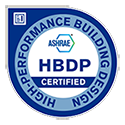
Interested in prepping for the High-Performance Building Design Professional (HBDP) certification exam? See a complete list of HBDP exam task content areas this course addresses.
Instructor: Hwakong Cheng, P.E., Member ASHRAE
Humidity Control I: Design Tips and Traps (code 65)
3:30 p.m. – 6:30 p.m., Orange County Convention Center
Course Description:
In commercial buildings, excess humidity and moisture promote mold, mildew, and uncomfortable conditions for occupants. This course, based on ASHRAE’s Humidity Control Design Guide for Commercial and Institutional Buildings and on the ASHRAE Guide for Buildings in Hot and Humid Climates, helps the designer achieve true control of humidity, rather than just its moderation. The course covers how to understand and easily estimate the major humidity loads that must govern the design of the system and how to make decisions about equipment size and configuration. Attendees will learn what equipment is used for this purpose, how it works, and how to apply their knowledge quickly, economically, and reliably.
Learning Objectives:
- Understand why and how humidity creates problems such as mold and bacterial growth in buildings
- Understand the five-step process that helps make humidity control design more simple and certain
- Understand and calculate regional variation of the dehumidification loads that govern the design of successful humidity control systems
- Understand basic equipment alternatives for achieving humidity control
Instructors: Mark Nunnelly, P.E., Member ASHRAE, CxA, and David Schurk, P.E., Fellow ASHRAE, LEED® AP, CEM
UPDATED! Advanced Design for Zero-Energy and Low-Carbon Buildings (code 66)
3:30 p.m. – 6:30 p.m., Orange County Convention Center
Course Description:
This advanced course is for professional engineers and architects who want to expand their practice to include the design, construction, and operation of zero energy (net zero) buildings. The first principle of zero energy design is to make the building as energy-efficient as possible. On-site renewable energy systems will then be added to achieve these efficiency goals. If adequate on-site zero energy is not feasible, then options for off-site renewable energy should be explored. The test for zero energy is at the energy meter, so proper commissioning and operator training are critical to success. The zero-energy principles outlined above will be presented with case studies and examples showing how other design professionals have met the zero-energy goal.
Learning Objectives:
- Procedures for assessing carbon emissions
- CO2e emission rates from Addendum M to Standard 189.1
- Long-run marginal emission rates in Standard 189.1
- Consumption and production signatures (hour-month) and how they relate to LRMER carbon emission signatures
- Strategies for decarbonization, including building electrification
- How to source energy can be defined in a way that tracks carbon emissions
- The social cost of GHG emissions and how this can be factored into LCC analysis
- Primary and secondary energy sources
- Embodied energy/carbon and GHG effects from refrigerant leaks
Instructor: Ghina Annan M.Eng Applied Energy, Member ASHRAE, CEM, LEED® AP
UPDATED! Fundamentals and Application of Standard 55 (code 67)
3:30 p.m. – 6:30 p.m., Orange County Convention Center
Course Description:
Based on ASHRAE Standard 55, Thermal Environmental Conditions for Human Occupancy, this course covers the theory and principles of the standard. It is intended to bridge the gap between the design practitioner’s knowledge of the built environment and its thermal relationship to the occupant’s physiology and psychology. Using examples, the course illustrates how to achieve compliance with the standard for the purposes of satisfying the requirements of various building performance programs such as LEED®.
Learning Objectives:
- Describe the background and history of thermal comfort research
- Explain the general environmental, localized, and personal factors that affect thermal comfort
- Understand the effects of metabolic rate, thermal insulation of clothing, and operative temperature
- Calculate the effects of elevated air speed on thermal comfort
- Assess and calculate local thermal discomforts
- Catalogue the instruments and process for assessing the thermal environment
Instructors: Larry Schoen, P.E., Member ASHRAE, and David Heinzerling, P.E., Member ASHRAE
Monday, February 10, 2025
Design of Affordable and Efficient Ground Source Heat Pump Systems (code 68)
8:30 a.m. – 11:30 a.m., Orange County Convention Center
Course Description:
This course describes the best design practices of ground-source heat pump systems to achieve maximum customer benefit. The course examines the economic analysis of ground-source versus more traditional systems and what is necessary to design an effective and efficient ground-source system. The course covers energy analysis, equipment selection, drilling technologies, testing requirements, hydronic system design, and system controls. Participants will learn all that is necessary for the design and installation of a successful ground-source heat pump system.
Learning Objectives:
- Understand GSHP nomenclature, system types, and appropriateness of various options
- Become acquainted with equipment options and methods of calculating system performance
- Learn the procedures for ground-coupled (closed-loop) heat exchanger and piping design
- Become familiar with GSHP system costs and field-measured performance data
- Gain knowledge of available ASHRAE resources to improve and expedite GSHP design
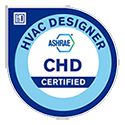
Interested in prepping for the Certified HVAC Designer (CHD) certification exam? See a complete list of CHD exam task content areas this course addresses.
Instructor: Stephen Hamstra, P.E., Member ASHRAE, LEED® A
Latest in High-Performance Dedicated Outdoor Air Systems (DOAS) (code 69)
8:30 a.m. – 11:30 a.m., Orange County Convention Center
Course Description:
Dedicated Outdoor Air Systems (DOAS) and related heating/cooling (H/C) systems have many advantages over traditional HVAC. This course builds on the ASHRAE DOAS Design Guide, DOAS Handbook Chapter, and the AEDGs by providing the latest application information on key parts of the system and units. Will cover how DOAS can control the building humidity, building pressure and provide clean air using traditional and advanced air cleaning options like PCO, DHP, and Ionization. The air cleaning discussion uses the new Std 241 pandemic application guidance. The course also covers using VAV DOAS, air-to-air energy recovery, and thermal storage to lower building operating costs in new and retrofit applications.
Learning Objectives:
- Describe the different types of Dedicated Outdoor Air Systems (DOAS)
- Explain why DOAS is an excellent system choice for high-performance, low-energy-use buildings
- Configure and control the latest generation of DOAS units to meet the latest ASHRAE standards
- Understand the benefits of energy recovery and how to it apply in DOAS units
- Understand the difference between unitary and DOAS efficiency metrics and when to use them

Interested in prepping for the Certified HVAC Designer (CHD) certification exam? See a complete list of CHD exam task content areas this course addresses.
Instructor: Jason Freudigmann, P.E., Member ASHRAE
Humidity Control II: Real-World Problems and Solutions (code 70)
8:30 a.m. – 11:30 a.m., Orange County Convention Center
Course Description:
For those who need to learn beyond the basics of humidity control, this course provides the next step. Based on ASHRAE’s best-selling Humidity Control Design Guide for Commercial and Institutional Buildings, the course includes an in-depth discussion of moisture load calculations and how humidity control can be added to HVAC designs for seven different types of commercial buildings. The course also covers the effects of different humidity levels on thermal comfort, corrosion, mold growth, and airborne microorganisms—information that helps the owner and designer define the optimal humidity control level for each application. This course puts the attendee on the fast track to understanding the effects of successful humidity control.
Learning Objectives:
- Understand that humidity control problems can only have three causes
- Identify what steps can be taken, and in what order, to diagnose a humidity control problem
- Recognize what quantitative tools and techniques are used during each stage of troubleshooting a humidity control problem
- Understand what steps can be taken in design and building operation to avoid common humidity control problems
Instructors: Mark Nunnelly, P.E., Member ASHRAE, CxA, and David Schurk, P.E., Fellow ASHRAE, LEED® AP, CEM
Air-to-Air Energy Recovery Applications: Best Practices (code 71)
8:30 a.m. – 11:30 a.m., Orange County Convention Center
Course Description:
Air-to-air energy recovery provides one of the most cost-effective and efficient ways to recycle waste energy and create superior indoor environments. This course will review real-world examples of where and how air-to-air energy recovery technologies are integrated into some of the most common, commercially available systems. Particular configurations that are most commonly used in high-performance buildings and how they can best be used to meet stretch goals for IEQ, energy efficiency, and thermal comfort will be examined to established performance metrics, peak performance results, and annual energy savings. A variety of different dedicated outdoor air systems, neutral air systems, and enhanced dehumidification strategies (with single and multiple heat exchangers) will be examined in detail. The advantages and important considerations for using air-to-air energy recovery in a variety of different applications will be covered. Best practices for mechanical design, exchanger selection, and control strategies will be discussed throughout.
Learning Objectives:
- Review the key points and concepts of select standards and understand their useful application in evaluating air-to-air energy recovery systems
- Learn about different air-to-air energy recovery system classifications and determine which systems are appropriate for a variety of different applications
- Understand the key considerations when selecting, sizing, and specifying air-to-air energy recovery equipment
- Realize the implications on performance and cost based on design decisions through the evaluation of a variety of practical examples for some of the most common DOAS system configurations
Instructor: Paul Pieper, Eng., Member ASHRAE
NEW! Ultra-Low-Energy Buildings and Microgrids: Tools for Resilience and Decarbonization (code 72)
2:45 p.m. – 5:45 p.m., Orange County Convention Center
Course Description:
The key goal of this course is to introduce the building design and management professions to the relationships between buildings and the electric grid through the lens of microgrid design. The design of electrical grids is typically seen as the purview of electrical engineers working in the realm of infrastructure. Still, the success of localized microgrid networks lies in the ability to provide the outcomes desired by project owners and users—which increasingly include reliability and decarbonization as well as financial viability. The ability to deliver these outcomes depends on the magnitude and timing of the building loads that need to be met in conjunction with on-site renewable energy resources. This course will describe the building blocks of a successful resilient and/or decarbonizing building-focused electrical microgrid.
Learning Objectives:
- Describe the defining characteristics of a microgrid
- Appreciate the role of buildings in microgrid success
- Differentiate among different microgrid design outcomes
- Understand load profiles and their modifiers, aligners, and disruptors
- Participate in the microgrid design process
Instructors: Walter Grondzik, P.E., Fellow/Life Member ASHRAE, LEED® AP, and Lisa White, P.E., Member ASHRAE
Variable Refrigerant Flow System Design & Application (code 73)
2:45 p.m. – 5:45 p.m., Orange County Convention Center
Course Description:
Variable refrigerant flow (VRF) systems are now being applied in many building types across North America. This course provides non-manufacturer-specific concepts of how to apply VRF systems to buildings. The course supplements the fundamental technology presented in the 2020 ASHRAE Handbook—HVAC Systems and Equipment, offering consulting engineers who already have a basic knowledge of VRF technology comprehensive system design and application guidance using building-specific scenarios. This course is geared towards mechanical engineers, design/build contractors, consulting engineers, HVAC system designers, and facility engineers.
Learning Objectives:
- Provide an overview of variable refrigerant flow (VRF) system technology
- Discuss considerations for the design and application of VRF systems in buildings
- Describe the applicability of ASHRAE Standard 15, Safety Standard for Refrigeration Systems, requirements to VRF systems
- Review the application of VRF systems in different building types
Instructor: Pushpinder Rana, P.Eng., Member ASHRAE, LEED® AP
Starting the Path to Net-Zero Buildings Using ASHRAE 90.1-2022 (code 74)
2:45 p.m. – 5:45 p.m., Orange County Convention Center
Course Description:
The 2022 version of 90.1 begins the Standard’s move to become a Net Zero Carbon Emission Code by 2031. This edition adds a new section, Chapter 11 Additional Efficiency Requirements. These additional requirements are above the prescriptive requirements but contain many options for compliance that demonstrate a possible path to net zero buildings. The mechanical section introduces the Total System Performance Ratio (TSPR) as an alternate path for compliance. This offers a whole new path to compliance using a system approach; not prescribed efficiency. The 2022 edition also includes a new informative appendix that can be used with Appendix G if a rating authority wants to use metrics other than energy cost, such as carbon. Appendix G also added Appendix J with performance curves to be used for part load equipment performance. It is estimated that this standard will reduce energy costs by over 15% when compared to the 2019 version and over 48% compared to buildings built in compliance with the 2004 version. Many of the methods used in the 2022 version to obtain these savings can be applied to the edition of the code currently used by your rating authority to show energy savings beyond your current code. This course covers the changes made in the 2022 edition.
Learning Objectives:
- Describe the background and development of Standard 90.1, its requirements and compliance paths.
- Describe the changes made to the Standard in 2022 with the context for understanding and applying the changes.
- Apply the new paths for compliance; Total System Performance Ratio (TSPR).
- Practice using new Section 11, Additional Efficiency Requirements.
- Explore ways to improve system energy performance in buildings

Interested in prepping for the Building Energy Assessment Professional (BEAP) certification exam? See a complete list of BEAP exam task content areas this course addresses.
Best Practices for Installing DDC Systems (code 75)
2:45 p.m. – 5:45 p.m., Orange County Convention Center
Course Description:
A facility’s direct digital controls (DDCs) form a living, breathing system that an owner will use throughout the life of the building. However, many control systems do not work as designed on “Day One,” much less after two to three years of use. Adding to the complexity are subcontractors, who often do not routinely install control systems, as well as installing contractors, who have broad discretion to determine aspects of how controls are instituted. In addition, many manufacturers (especially in developing countries) sell DDCs and components but provide little information on installation practices or quality control guidelines. If standardized and quality installations are promoted, the short- and long-term success of control systems will be greatly improved. This provides tools to ensure uniformity for consultants, contractors, and code officials and will specifically benefit consulting engineers, DDC design integration engineers, commissioning authorities, and contractors who install DDC systems.
Learning Objectives:
- How to install DDC systems according to best industry practices
- How to commission DDC systems to produce specified comfort levels
- How to test DDC systems to ensure correct system operation
Instructor: Larry Fisher, Life Member ASHRAE
Tuesday, February 11, 2025
V in HVAC – Health and Energy Improvements Using the Indoor Air Quality Procedures (code 78)
9:00 a.m. – 12:00 p.m., Orange County Convention Center
Course Description:
A course offers comprehensive guidance for utilizing the IAQ procedure outlined in ANSI/ASHRAE Standard 62.1-2022. It covers various aspects of design, including considerations related to indoor air quality (IAQ), indoor and outdoor contaminants, pollutant indicators, threshold values, mass balance analysis, as well as the criteria for both objective and subjective measurements. Additionally, it examines the provisions necessary for compliance with ASHRAE Standard 241. Furthermore, the course provides detailed insights into the calculations needed for single-zone and multi-zone scenarios, incorporating different filter placements. These calculations are facilitated through an open-source calculator. Lastly, the course explores the advantages and benefits associated with the IAQP (Indoor Air Quality Procedure).
Learning Objectives:
- Explain the adjustment factors for any system designed with the VRP that converts the breathing zone ventilation rates to outdoor air intake ventilation rate
- Know two techniques for improving system ventilation efficiency
- Explain the importance of airflow patterns in occupant exposure
- Know the benefits of enhanced filtration for reducing particle exposure
- Understand that different approaches to HVAC design in different climate zones using the Ventilation Rate Procedure can result in different quantities of outside air at the outside air intake
- Understand a comparison of energy model projections from designs using the Multiple Space Equation to DOAS designs using the 100% outdoor air equation.

Interested in prepping for the High-Performance Building Design Professional (HBDP) certification exam? See a complete list of HBDP exam task content areas this course addresses.
Instructors: Hoy Bohanon, P.E., BEAP, Member ASHRAE, LEED® AP and Marwa Zaatari, Ph.D., Associate Member
Changing Environments and Loads for Data Center (High Density, Liquid Cooling, Edge Computing) (code 79)
1:00 p.m. – 4:00 p.m., Orange County Convention Center
Course Description:
IT equipment changes are significantly impacting data center design. These changes are the result of IT manufacturers continually responding to customer demands. Depending on the market sector, demands call for IT equipment that is lower cost, more energy efficient, provides more storage, and provides more computing capabilities. Additionally, the marketplace for housing IT equipment is changing rapidly with the rapid growth of edge computing. This course will describe the data center design considerations to meet current IT equipment changes. Results without data center design changes include stranded IT capacity and reduced IT performance. The trend is a rise in liquid-cooled computers and their use cases. There is an increasing need for data center planning to include future liquid cooling. This course will also explore the challenges of designing, deploying, and maintaining small data centers that are surrounded by semi-controlled, or even uncontrolled, external environments. The rapid growth of these edge computing data centers is being driven by new classes of digital growth that require local processing, i.e., where the dataset is too large and/or the application is too latency-sensitive to be transmitted back to a centralized cloud server.
Learning Objectives:
- Discuss the previous, current, and future trends in IT hardware
- Describe the basics and requirements of IT hardware and recent discoveries and concerns affecting IT hardware
- Explain the different air-cooling architectures for Datacom facilities
- Describe the implementation of liquid cooling for Datacom equipment and the liquid Cooling infrastructure requirements for chilled-water systems
Instructors: Jeff Stein, Member ASHRAE; and Brandon Gill, Member ASHRAE
Transfer, Cancellation and Refund Policy:
Cancellations must be made by email to edu@ashrae.org by January 13, 2025, to receive a full refund.
No refund will be issued on cancellations after January 13, 2025.
Substitutions are accepted in lieu of cancellations.